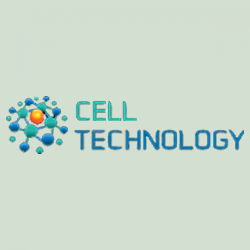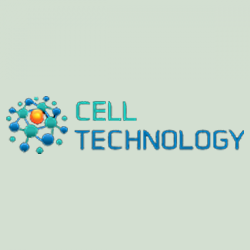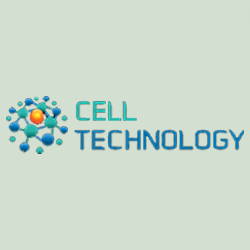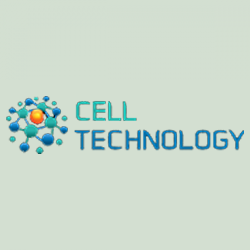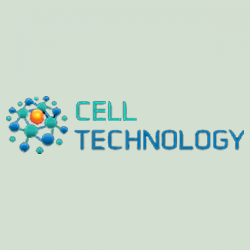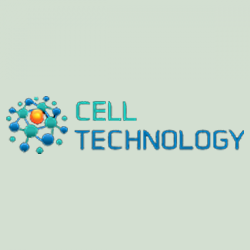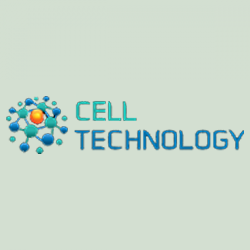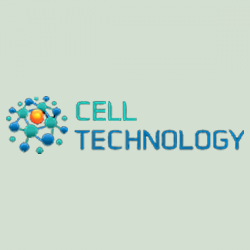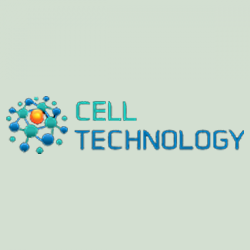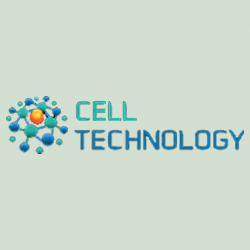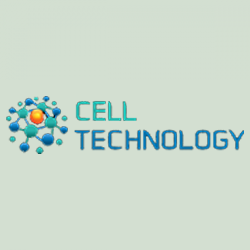Ningún producto

CELL TECHNOLOGY
-
Reactivos
- TOCRIS
- BIOTIUM
- CLOUD CLONE
- FINETEST
- KPL
- BIOER
- INNOVATIVE RESEARCH
- CYANAGEN
- ATLAS ANTIBODIES
- ABNOVA
- SAFE Substitutes to EtBr
- SAFE Real Time PCR dyes
- CYTOSKELETON
- BACHEM
- IMMUNOSTAR
- CELL TECHNOLOGY
- BIOWORLD
- ABBEXA
- ELK Biotechnology
- AVIVA Systems Biology
- MAGNAMEDICS Separacion Magnetica
- MAGNAMEDICS
- BIOMIGA
- CMA Microdiálisis
- BIOPREMIER
- Sustitutos del EtBr
- REACTIVOS ASTORI
-
Instrumentos
-
Agitadores /Agit. con Incubacion
- Agitadores Orbitales /Vaiven
- Agitadores Incubadores Sobremesa
- Incubadores Roller
- Pequeños Agitadores
- Agitadores Incubadores de Suelo
- Accesorios Agitadores Infors
- Accesorios Agitadores Labnet International
- Accesorios Agitadores Biosan
- Accesorios Agitadores Benchmark
- Accesorios Agitadores Otras Marcas
- Alimentacion
- Automatización de Laboratorio
- Balanzas /Autoclaves /pHs
- Bombas Jeringa
- Bombas Peristalticas
- Bombas Pulsatil/Centrifugas
-
Baños /Chillers /Termobloques
- Baños Secos: Equipos y Accesorios
- Baños Termostaticos
- Baños con Agitacion
- Baños y Termostatos de Inmersión Refrigerados
- Baños con Circulación Externa y Termostatos de Inmersión
- Placas/Mantas Calefac./Baños Arena
- Accesorios Baños BenchMark
- Accesorios Baños Jeiotech
- Accesorios Baños Nuve
- Acesorios Baños Astori
-
Centrífugas
- Microcentrífugas
- Minicentrifugas Vórtex
- Centrífugas Básicas
- Centrífugas Universales
- Supercentrífugas / Gran Capacidad
- Rotores y accesorios para Centrifugas Labnet International
- Rotores y acc. para Centrífugas Biosan
- Rotores, Accesorios para centrifugas NUVE
- Rotores y acc. para centrífuga ELMI
- Rotores, Accesorios para MPW-54
- Rotores, Accesorios para MPW-55
- Rotores, Accesorios para MPW-56
- Rotores, Accesorios para MPW-150R
- Rotores, Accesorios para Centrifugas MPW-102M Universal y MPW-260, MPW-260R y MPW-260RH
- Rotores y Accesorios para centrifugas MPW-102 Science y Diagnostic
- Rotores, Accesorios para centrifuga MPW-351E
- Rotores, Accesorios para centrifugas MPW-352,352R, 352RH
- Rotores, Accesorios para centrifugas MPW-380/380R
- Cytoset Para MPW-102MS/ 102MU/ 102MD/ 352/ 352R/ 352RH
- Cabinas / Cámaras
- Cultivos celulares y bacterianos
- Detectores Radioactividad
- Espectrofotometro
- Estufas /Incubadores /Camaras
- Equipos para Microplacas
- Equipos de Frio/ Almacenamiento Muestras
- Fermentadores
- Homogeneizadores
- Lectores de Tubos
- Manejo Liquidos
- Microbiologia
- Microscopia
-
Experimentacion Animal
- Sistemas Estereotaxia
- Anestesia / Respiradores
- Dolor / Inflamacion / Hiperalgesia
- Coordinacion Motora / Actividad
- Metabolismo / Comportamiento Alimentario
- Conducta / Condicionamiento / Laberintos
- Analizadores de O2 / CO2
- Muestreador automatico de sangre
- Electrofisiologia
- Analizadores RMN de composicion corporal
- Sistemas Animales Despiertos
- Bombas Osmóticas Implantables RWD
- Histología
- Microdialisis
- Tratamiento de Agua
- Ultrasonidos
- Bombas de Vacio/Presion
- Procesamiento Tisular
- Concentracion de Muestras en Viales y Microplacas
- Documentacion de Geles y Western, Equipos Imagen
- Electroforesis
- Lamparas UV, Cabinas Visión UV, Crosslinkers, Proteccion UV
- PCR y PCR Cuantitativa
- Analizador Oxido Nitrico
-
Agitadores /Agit. con Incubacion
-
Consumibles
- PCR, Tubos Y Placas
- Microplacas / Fluo / Lum / Abs
- Microtubos
- Extraccion en Fase Solida
- Puntas Pipetas
- Tubos / Tubos Centrifuga
- Tubos / Botellas Ultra / Supercentrifuga
- Tubos / Botellas de Cultivo
- Cubetas Espectrofotometro
- Viales Lectura Luminiscencia
- Experimentacion Animal
- Consumibles Congelacion
- Placas Co-Cultivo
- Descargas
- Productos Estrella
Enlaces

|
Link a Tocris |

|
Información esencial Tocris |

|
Posters y Guias Tocris |

|
Infromación Gnral Reactivos |
Cell Technology fue fundada en 1998 para proporcionar soluciones para la investigación académica, biotecnológica y farmacéutica. Su objetivo es desarrollar ensayos únicos que permiten a los investigadores estudiar las funciones celulares utilizando reactivos que penetran la membrana celular. Este proceso permite la detección in situ de eventos c...
Cell Technology fue fundada en 1998 para proporcionar soluciones para la investigación académica, biotecnológica y farmacéutica. Su objetivo es desarrollar ensayos únicos que permiten a los investigadores estudiar las funciones celulares utilizando reactivos que penetran la membrana celular. Este proceso permite la detección in situ de eventos celulares o de tejidos específicos, asegurando el mantenimiento de la morfología y de la arquitectura. Su primer lanzamiento fue una línea de productos que detectan células apoptóticas mediante la medición de las caspasas activas y la pérdida de potencial de membrana mitocondrial. Se ha ampliado su catálogo con productos altamente específicos de detección de caspasa, así como para la detección de los productos de la catepsina y productos ELISA. Se seguirá ampliando con productos con el compromiso de desarrollar reactivos únicos, de alta tecnología.
CELL TECHNOLOGY hay 51 productos.
-
Hydrogen Peroxide Detection/Peroxidase Detection Kit
A rapid, no-wash assay to measure H2O2, based on the formation of a fluorescent product. The kit can measure H2O2 release from cells or enzyme coupled reactions. It can also measure peroxidase activity.
-
Fluorescent Lactate Detection Kit
This kit provides a reliable, sensitive fluorometric method for the quantification of lactate in biological samples such as serum, plasma, urine, and tissue extracts. The assay plate can be incubated and read in 15-30 min.
-
Dual Poly Caspase and Mitochondrial Membrane Potential Assay Kit
This kit utilizes a cell permeable two-color stain to simultaneously detect caspase activity and mitochondrial membrane potential (MMP) in cells. Active caspases are detected with the poly caspase probe FAM-VAD-FMK and MMP with a cationic dye.
-
Apo Active FITC - Caspase 3 Detection Kit
This kit is highly specific for active human and murine enzyme. The kit utilizes a rabbit affinity purified polyclonal antibody against aa 163-175 of murine caspase 3. Visualization of fixed samples is via a FITC-labeled goat anti-rabbit antibody.
-
Apo 3/7 HTS Assay Kit
A homogenous fluorescent assay that utilizes the quenched (z-DEVD)2-R110 peptide substrate for caspase 3/7 detection. The assay can be used for high throughput screening
-
Mito Flow - Mitochondrial membrane potential detection kit
Flo200-2 is an easy to use kit which measures mitochondrial membrane potential using flow cytometry. Useful for analysing both suspension and monolayer adherent cell lines.
-
Chlorination and Oxidation detection Kit
Can monitor multiple time points to follow kinetics., One-step, no wash assay., Adaptable for High Throughput format., Highly Sensitive.
-
Fluorescent Cell Proliferation Assay
An oxidation/reduction-based reagent quantitatively measures the reducing power of living cells. The cell-permeable reagent is blue in color, but non-fluorescent. When reduced by viable cells, it fluoresces red. Read in a fluorescent plate reader.
-
Fluorescent ATP Detection Kit
ICT’s Fluoro ATP assay provides a reliable, sensitive fluorimetric assay for the quantification of ATP in biological samples., Detection of ATP in cells or tissue extracts., Detection of ATP in cell death, energy metabolism, mitochondria function., ATP measurement in ATP consuming enzymes such as Kinases and ATPases., ATP detection in Bacterial, Fungal...
-
Fluorescent Semicarbazide-Sensitive Amine Oxidase Detection Kit
This kit utilizes a non-fluorescent detection reagent to measure H2O2 released from the conversion of benzylamine to benzaldehyde via Semicarbazide-Sensitive Amine Oxidase. H2O2 then oxidizes the detection reagent to produce a fluorescent product.
-
Fluorescent Phosphate Detection Kit
This kit provides a simple, one-step fluorometric or colorimetric method for determination of phosphate in serum and plasma samples. The assay is based on an enzyme-coupled reaction that detects inorganic phosphate.
-
Ultra Pure ADP
Commercially available ADP is contaminated with trace amounts of ATP. In bioluminescence assays this trace ATP contamination results in high backgrounds and reduces assay sensitivity. , ICT's ADP is purified to remove these trace ATP contaminants and as a result produces ADP that is greater than 99.9% pure.

